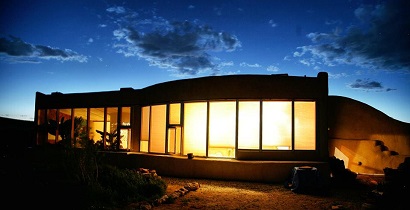
January 19, 2016, by Grace Pownall
Spotlight On… Building Services
By Grace Pownall, student blogger
The inaugural Spotlight On… Building Services shone a light on what building services engineering involves, highlighting the importance of creating sustainable environments in which we can live and thrive.
Although it is a sector primarily occupied by mechanical, electrical, and architectural engineers, as a structural engineer I still found it very interesting and informative.
While structural engineering involves designing the skeleton of the building, building services could be compared to the planning its internal organs. It covers ventilation, plumbing, heat regulation, energy management, lighting, and much more. Building services engineers are responsible for making a environment habitable and comfortable to use.
Responsible design
The first speaker of the night was Alistair Guthrie, Director of Building Design at Arup, a global design consultancy. Alistair explained the importance of “putting sustainability at the heart of our projects,” revealing that the construction industry uses up nearly a third of the world’s resources.
From the vast amounts of water and energy consumed to the tonnes of waste thrown into landfill, even the basic construction of buildings affects the amount of greenhouse gases emitted into the atmosphere.
On a smaller scale, the places that we live, work, socialise, and relax all affect our quality of life. This means building services engineers are responsible for creating environments that not just provide comfortable shelter, but are stimulating and enhance society.
All professions within the industry must consider the impact their projects have on both the environment and society, in order to devise truly sustainable solutions.
A sustainable, innovative approach
The second talk was given by Ant Wilson, Director of Sustainability and Advanced Design at AECOM, another massive engineering design firm. He discussed how building technology had evolved to incorporate more sustainable initiatives.
It was interesting to hear him explain how a low carbon building won’t necessarily be a low energy building, and how smart buildings won’t in fact save any energy unless we, the occupants, change how we use them.
The use of advanced computer programmes and the implementation of high-tech building services aren’t a one-size fits all solution. Design teams must make sure they not only meet, but exceed building regulations, as these are only the minimum acceptable standards. By only just scraping by, you’re creating the worst possible building allowed!
Using environmental assessment methods, such as Building Research Establishment Environmental Assessment Methodology (BREEAM) and Leadership in Energy and Environmental Design (LEED), is a good way of ensuring a building considers sustainability in its design. However, it should be about more than just ticking boxes and meeting criteria. To create something truly sustainable, there must be careful thought and consideration about the whole life cycle of a building.
After listening to Alistair and Ant speak – I was unable to stay for the rest of the talks – I am now sure that I picked the right engineering degree for me. While I find the impact of building services very interesting, I am more interested in structural design and the use of the building, rather than its aforementioned ‘organs.’
Are you considering a career in building services? For more information about working in this sector, book an appointment with one of career advisers today.
If sustainability is something you are passionate about, booking is now open for the 2016 Spotlight On… Sustainability. To book a place, log in to My Career and search for event ID 5350.
Image credit: Jenny Parkins – Earthship Exterior 2
No comments yet, fill out a comment to be the first

Leave a Reply